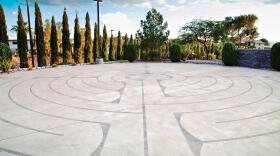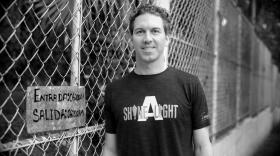Dr. Stanley Cohen says he is a very dull person. He doesn’t like to gamble or party. But an outsider looking in might see things differently. While not interested in Texas Hold ’Em or slot machines, Cohen has dedicated much of his life to a pursuit where the stakes run much higher: as a vascular neurologist in Southern Nevada. Now semi-retired, Cohen still consults on stroke cases with colleagues as well as for the National Institutes of Health. One thing hasn’t changed, however: He’s still adamant about stroke prevention through healthy lifestyle changes.
“I was fat as a kid,” he says. “Staying non-obese has been my life’s work. I tell my patients to find a diet that they can stick to and do it.” (Unfortunately, sometimes they’re not convinced until they’re on the operating table. “Patients I’ve followed for years: no lifestyle change. Then they have open-heart surgery and come back 25 pounds lighter.”)
According to the National Stroke Association, stroke is the fourth leading cause of death in the U.S. and the No. 1 cause of disability in adults. Dr. Cohen says Nevada ranks higher than the national average in both risk factors and occurrence of stroke. In fact, outside of the “Stroke Belt” (the Southeastern states), our state and our city sees far more blocked and burst blood vessels than most. Almost seven years ago, Dr. Cohen brought his practice to Las Vegas, knowing full well that Southern Nevada would test his medical know-how. “People who already have risk factors come here and push it,” he says.
Head to the hospital these days with signs of stroke and docs will pop you in an MRI machine or give you a CT scan. They will give you meds that can help you live. These are relatively new phenomena.
“When I started practicing, there was nothing to do for stroke besides diagnosis and prognosis,” Cohen says. The best doctors had was an angiogram, a procedure that involves shoving a very large needle into the carotid artery at the base of the neck, driving a stent into the resulting hole, pumping in radioactive fluid, and then snapping as many X-rays as possible before the liquid dissipated. The angiogram is a fun night out in comparison with a pneumoencephalogram, something like a failed Six Flags attraction. (“Have you seen The Exorcist?” Cohen asks jokingly.) Air or gas is pumped into the spine of the patient, who is sometimes rotated like a kid at space camp so the air travels up into the brain and X-rays can be taken.
Cohen’s career has seen the advent of major breakthroughs in imaging technologies. In 1975, during his intern year in Albany, N.Y., he got to work with the only CT scan north of New York City. He also got to work with one of its inventors, Bill Oldendorf. “He was just a doctor,” says Cohen. “He took an orange, stuck nails in it and put it on the flatbed car of his son’s toy train set. Then he put a radioactive source in a container with a small opening on one side of the tracks and some film on the other.” Oldendorf turned on the train, ran the orange between the radioactive source and the film and — presto — he produced images of the flesh beneath the orange peel. Such advances have significantly increased accurate diagnosis and rates of recovery.
A doctor cannot rely on technology alone, and Cohen has proved himself to be a patient and perceptive diagnostician. When he was practicing in California, he treated a 7-year-old girl, Gabriella, who suffered a baffling series of strokes. “I saw her up and playing,” says Cohen. “I thought that she should be in an ICU.” For two difficult years, Cohen engaged in careful monitoring, testing and analysis before he finally cracked the code: She had moyamoya disease, a rare disorder caused by blocked arteries in the base of the brain. Nancy, Gabriella’s mother, says, “(Dr. Cohen) dealt with (my daughter) directly and explained to her what was happening and answered her questions. He empowered her.” Thanks to his correct diagnosis, Gabriella had surgery and recovered. She is now 17 and just finished her junior year of high school.








